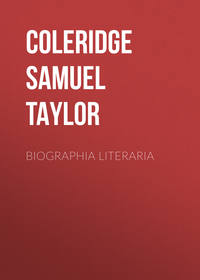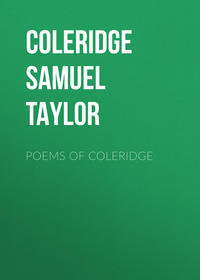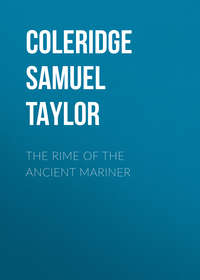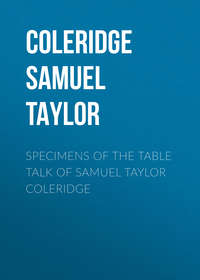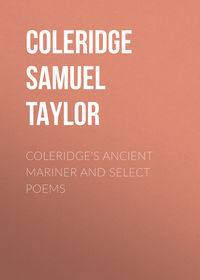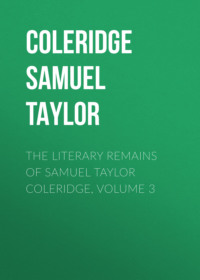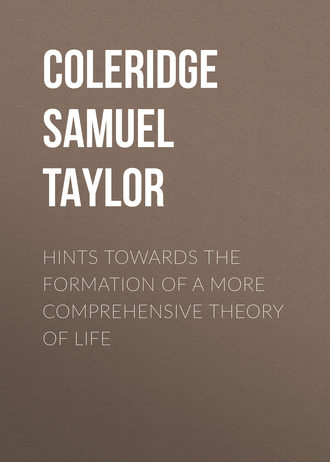 полная версия
полная версияHints towards the formation of a more comprehensive theory of life
With the ascent in power, the intensity of individuation keeps even pace; and from this we may explain all the characteristic distinctions between this class and that of the vermes. The almost homogeneous jelly of the animalcula infusoria became, by a vital oxydation, granular in the polypi. This granulation formed itself into distinct organs in the molluscæ; while for the snails, which are the next step, the animalized lime, that seemed the sole final cause of the life of the polypi, assumes all the characters of an ulterior purpose. Refined into a horn-like substance, it becomes to the snails the substitute of an organ, and their outward skeleton. Yet how much more manifold and definite, the organization of an insect, than that of the preceding class, the patient researches of Swammerdam and Lyonnet have evinced, to the delight and admiration of every reflecting mind.
In the insect, for the first time, we find the distinct commencement of a separation between the exponents of sensibility and those of irritability; i.e. between the nervous and the muscular system. The latter, however, asserts its pre-eminence throughout. The prodigal provision of organs for the purposes of respiration, and the marvellous powers which numerous tribes of insects possess, of accommodating the most corrupted airs, for a longer or shorter period, to the support of their excitability, would of itself lead us to presume, that here the vis irritabilis is the reigning dynasty. There is here no confluence of nerves into one reservoir, as evidence of the independent existence of sensibility as sensibility;—and therefore no counterpoise of a vascular system, as a distinct exponent of the irritable pole. The whole muscularity of these animals, is the organ of irritability; and the nerves themselves are probably feeders of the motory power. The petty rills of sensibility flow into the full expanse of irritability, and there lose themselves. The nerves appertaining to the senses, on the other hand, are indistinct, and comparatively unimportant. The multitude of immovable eyes appear not so much conductors of light, as its ultimate recipient. We are almost tempted to believe that they constitute, rather than subserve, their sensorium.
These eye-facets form the sense of light, rather than organs of seeing. Their almost paradoxical number at least, and the singularity of their forms, render it probable that they impel the animal by some modification of its irritability, herein likewise containing a striking analogy to the known influence of light on plants, than as excitements of sensibility. The sense that is nearest akin to irritability, and which alone resides in the muscular system, is that of touch, or feeling. This, therefore, is the first sense that emerges. Being confined to absolute contact, it occupies the lowest rank; but for that very reason it is the ground of all the other senses, which act, according to the ratio of their ascent, at still increasing distances, and become more and more ideal, from the tentacles of the polypus, to the human eye; which latter might be defined the outward organ of the identity, or at least of the indifference, of the real and ideal. But as the calcareous residuum of the lowest class approaches to the nature of horn in the snail, so the cumbrous shell of the snail has been transformed into polished and moveable plates of defensive armour in the insect. Thus, too, the same power of progressive individuation articulates the tentacula of the polypus and holothuria into antennæ; thereby manifesting the full emersion and eminency of irritability as a power which acts in, and gives its own character to, that of reproduction. The least observant must have noticed the lightning-like rapidity with which the insect tribes devour and eliminate their food, as by an instinctive necessity, and in the least degree for the purposes of the animal's own growth or enlargement. The same predominance of irritability, and at the same time a new start in individuation, is shown in the reproductive power as generation. There is now a regular projection, ab intra ad extra, for which neither sprouts nor cuttings can any longer be the substitutes. We have not space for further detail; but there is one point too strikingly illustrative and even confirmative of the proposed system, to be omitted altogether. We mean the curious fact, that the same characteristic tendency, ad extra, which in the males and females of certain insect tribes is realized in the functions of generation, conception, and parturiency, manifests and expands itself in the sexless individuals (which are always in this case the great majority of the species), as instincts of art, and in the construction of works completely detached and inorganic; while the geometric regularity of these works, which bears an analogy to crystallization, is demonstrably no more than the necessary result of uniform action in a compressed multitude.
Again, as the insect world, averaging the whole, comes nearest to plants, (whose very essence is reproduction,) in the multitude of their germs; so does it resemble plants in the sufficiency of a single impregnation for the evolution of myriads of detached lives. Even so, the metamorphoses of insects, from the egg to the maggot and caterpillar, and from these, through the nympha and aurelia into the perfect insect, are but a more individuated and intenser form of a similar transformation of the plant from the seed-leaflets, or cotyledons, through the stalk, the leaves, and the calyx, into the perfect flower, the various colours of which seem made for the reflection of light, as the antecedent grade to the burnished scales, and scale-like eyes of the insect. Nevertheless, with all this seeming prodigality of organic power, the whole tendency is ad extra, and the life of insects, as electricity in the quadrate, acts chiefly on the superficies of their bodies, to which we may add the negative proof arising from the absence of sensibility. It is well known, that the two halves of a divided insect have continued to perform, or attempt, each their separate functions, the trunkless head feeding with its accustomed voracity, while the headless trunk has exhibited its appropriate excitability to the sexual influence.
The intropulsive force, that sends the ossification inward as to the centre, is reserved for a yet higher step, and this we find embodied in the class of fishes. Even here, however, the process still seems imperfect, and (as it were) initiatory. The skeleton has left the surface, indeed, but the bones approach to the nature of gristle. To feel the truth of this, we need only compare the most perfect bone of a fish with the thigh-bones of the mammalia, and the distinctness with which the latter manifest the co-presence of the magnetic power in its solid parietes, of the electrical in its branching arteries, and of the third greatest power, viz., the qualitative and interior, in its marrow. The senses of fish are more distinct than those of insects. Thus, the intensity of its sense of smell has been placed beyond doubt, and rises in the extent of its sphere far beyond the irritable sense, or the feeling, in insects. I say the feeling, not the touch; for the touch seems, as it were, a supervention to the feeling, a perfection given to it by the reaction of the higher powers. As the feeling of the insect, in subtlety and virtual distance, rises above the solitary sense of taste16 in the mollusca, so does the smell of the fish rise above the feeling of the insect. In the fish, likewise, the eyes are single and moveable, while it is remarkable that the only insect that possesses this latter privilege, is an inhabitant of the waters. Finally, here first, unequivocally, and on a large scale, (for I pretend not to control the freedom, in which the necessity of Nature is rooted, by the precise limits of a system,)—here first, Nature exhibits, in the power of sensibility, the consummation of those vital forms (the nisus formativi) the adequate and the sole measure of which is to be sought for in their several organic products. But as if a weakness of exhaustion had attended this advance in the same moment it was made, Nature seems necessitated to fall back, and re-exert herself on the lower ground which she had before occupied, that of the vital magnetism, or the power of reproduction. The intensity of this latter power in the fishes, is shown both in their voracity and in the number of their eggs, which we are obliged to calculate by weight, not by tale. There is an equal intensity both of the immanent and the projective reproduction, in which, if we take in the comparative number of individuals in each species, and likewise the different intervals between the acts, the fish (it is probable) would be found to stand in a similar relation to the insect, as the insect, in the latter point, stands to the system of vegetation. Meantime, the fish sinks a step below the insect, in the mode and circumstances of impregnation. To this we will venture to add, the predominance of length, as the form of growth in so large a proportion of the known orders of fishes, and not less of their rectilineal path of motion. In all other respects, the correspondence combined with the progress in individuation, is striking in the whole detail. Thus the eye, in addition to its moveability, has besides acquired a saline moisture in its higher development, as accordant with the life of its element. Add to these the glittering covering in both, the splendour of the scales in the one answering to the brilliant plates in the other,—the luminous reservoirs of the fire-flies,—the phosphorescence and electricity of many fishes,—the same analogs of moral qualities, in their rapacity, boldness, modes of seizing their prey by surprise,—their gills, as presenting the intermediate state between the spiracula of the grade next below, and the lungs of the step next above, both extremes of which seem combined in the structure of birds and of their quill-feathers; but above all, the convexity of the crystalline lens, so much greater than in birds, quadrupeds, and man, and seeming to collect, in one powerful organ, the hundred-fold microscopic facettes of the insect's light organs; and it will not be easy to resist the conviction, that the same power is at work in both, and reappears under higher auspices. The intention of Nature is repeated; but, as was to have been expected, with two main differences.
First, that in the lower grade the reproductions themselves seem merged in those of irritability, from the very circumstance that the latter constitutes no pole, either to the former, or to sensibility. The force of irritability acts, therefore, in the insect world, in full predominance; while the emergence of sensibility in the fish calls forth the opposite pole of reproduction, as a distinct power, and causes therefore the irritability to flow, in part, into the power of reproduction. The second result of this ascent is the direction of the organizing power, ad intra, with the consequent greater simplicity of the exterior form, and the substitution of condensed and flexible force, with comparative unity of implements, for that variety of tools, almost as numerous as the several objects to which they are to be applied, which arises from, and characterises, the superficial life of the insect creation. This grade of ascension, however, like the former, is accompanied by an apparent retrograde movement. For from this very accession of vital intensity we must account for the absence in the fishes of all the formative, or rather (if our language will permit it) fabricative instincts. How could it be otherwise? These instincts are the surplus and projection of the organizing power in the direction ad extra, and could not, therefore, have been expected in the class of animals that represent the first intuitive effort of organization, and are themselves the product of its first movement in the direction ad intra. But Nature never loses what she has once learnt, though in the acquirement of each new power she intermits, or performs less energetically, the act immediately preceding. She often drops a faculty, but never fails to pick it up again. She may seem forgetful and absent, but it is only to recollect herself with additional, as well as recruited vigour, in some after and higher state; as if the sleep of powers, as well as of bodies, were the season and condition of their growth. Accordingly, we find these instincts again, and with them a wonderful synthesis of fish and insect, as a higher third, in the feathered inhabitants of the air. Nay, she seems to have gone yet further back, and having given B + C = D in the birds, so to have sported with one solitary instance of B + D = A in that curious animal the dragon, the anatomy of which has been recently given to the public by Tiedemann; from whose work it appears, that this creature presents itself to us with the wings of the insect, and with the nervous system, the brain, and the cranium of the bird, in their several rudiments.
The synthesis of fish and insect in the birds, might be illustrated equally in detail with the former; but it will be sufficient for our purpose, that as in both the former cases, the insect and the fish, so here in that of the birds, the powers are under the predominance of irritability; the sensibility being dormant in the first, awakening in the second, and awake, but still subordinate, in the third. Of this my limits confine me to a single presumptive proof, viz., the superiority in strength and courage of the female in the birds of prey. For herein, indeed, does the difference of the sexes universally consist, wherever both the forces are developed, that the female is characterised by quicker irritability, and the male by deeper sensibility. How large a stride has been now made by Nature in the progress of individuation, what ornithologist does not know? From a multitude of instances we select the most impressive, the power of sound, with the first rudiments of modulation! That all languages designate the melody of birds as singing (though according to Blumenbach man only sings, while birds do but whistle), demonstrates that it has been felt as, what indeed it is, a tentative and prophetic prelude of something yet to come. With this conjoin the power and the tendency to acquire articulation, and to imitate speech; conjoin the building instinct and the migratory, the monogamy of several species, and the pairing of almost all; and we shall have collected new instances of the usage (I dare not say law) according to which Nature lets fall, in order to resume, and steps backward the furthest, when she means to leap forwards with the greatest concentration of energy.
For lo! in the next step of ascent the power of sensibility has assumed her due place and rank: her minority is at an end, and the complete and universal presence of a nervous system unites absolutely, by instanteity of time what, with the due allowances for the transitional process, had before been either lost in sameness, or perplexed by multiplicity, or compacted by a finer mechanism. But with this, all the analogies with which Nature had delighted us in the preceding step seem lost, and, with the single exception of that more than valuable, that estimable philanthropist, the dog, and, perhaps, of the horse and elephant, the analogies to ourselves, which we can discover in the quadrupeds or quadrumani, are of our vices, our follies, and our imperfections. The facts in confirmation of both the propositions are so numerous and so obvious, the advance of Nature, under the predominance of the third synthetic power, both in the intensity of life and in the intenseness and extension of individuality, is so undeniable, that we may leap forward at once to the highest realization and reconciliation of both her tendencies, that of the most perfect detachment with the greatest possible union, to that last work, in which Nature did not assist as handmaid under the eye of her sovereign Master, who made Man in his own image, by superadding self-consciousness with self-government, and breathed into him a living soul.
The class of Vermes deposit a calcareous stuff, as if it had torn loose from the earth a piece of the gross mass which it must still drag about with it. In the insect class this residuum has refined itself. In the fishes and amphibia it is driven back or inward, the organic power begins to be intuitive, and sensibility appears. In the birds the bones have become hollow; while, with apparent proportional recess, but, in truth, by the excitement of the opposite pole, their exterior presents an actual vegetation. The bones of the mammalia are filled up, and their coverings have become more simple. Man possesses the most perfect osseous structure, the least and most insignificant covering. The whole force of organic power has attained an inward and centripetal direction. He has the whole world in counterpoint to him, but he contains an entire world within himself. Now, for the first time at the apex of the living pyramid, it is Man and Nature, but Man himself is a syllepsis, a compendium of Nature—the Microcosm! Naked and helpless cometh man into the world. Such has been the complaint from eldest time; but we complain of our chief privilege, our ornament, and the connate mark of our sovereignty. Porphyrigeniti sumus! In Man the centripetal and individualizing tendency of all Nature is itself concentred and individualized—he is a revelation of Nature! Henceforward, he is referred to himself, delivered up to his own charge; and he who stands the most on himself, and stands the firmest, is the truest, because the most individual, Man. In social and political life this acme is inter-dependence; in moral life it is independence; in intellectual life it is genius. Nor does the form of polarity, which has accompanied the law of individuation up its whole ascent, desert it here. As the height, so the depth. The intensities must be at once opposite and equal. As the liberty, so must be the reverence for law. As the independence, so must be the service and the submission to the Supreme Will! As the ideal genius and the originality, in the same proportion must be the resignation to the real world, the sympathy and the inter-communion with Nature. In the conciliating mid-point, or equator, does the Man live, and only by its equal presence in both its poles can that life be manifested!
* * * * *If it had been possible, within the prescribed limits of this essay, to have deduced the philosophy of Life synthetically, the evidence would have been carried over from section to section, and the quod erat demonstrandum at the conclusion of one section would reappear as the principle of the succeeding—the goal of the one would be the starting-post of the other. Positions arranged in my own mind, as intermediate and organic links of administration, must be presented to the reader in the first instance, at least, as a mere hypothesis. Instead of demanding his assent as a right, I must solicit a suspension of his judgment as a courtesy; and, after all, however firmly the hypothesis may support the phenomena piled upon it, we can deduce no more than a practical rule, grounded on a strong presumption. The license of arithmetic, however, furnishes instances that a rule may be usefully applied in practice, and for the particular purpose may be sufficiently authenticated by the result, before it has itself been duly demonstrated. It is enough, if only it hath been rendered fully intelligible.
In a system where every position proceeds from a scientific preconstruction, a power acting exclusively in length, would be magnetism by virtue of our own definition of the term. In like manner, a surface power would be electricity, as far as that system was concerned, whether it accorded or not with the facts ordinarily so called. But it is incumbent on us, who must treat the subject analytically, to show by experiment that magnetism does in fact act longitudinally, and electricity superficially; and that, consequently, the former is distinguished from, and yet contained in, the latter, as a straight line is distinguished from, yet contained in, a superficies.
First, that magnetism, in its conductors, seeks and follows length only, and by the length is itself conducted, has been proved by Brugmans, in his philosophical Essay on the Matter of Magnetism, where he relates that a magnet capable of supporting a body four times heavier than itself, and which acted as a magnetic needle at the distance of twenty inches, was so weakened by the interposition of three cast-iron plates of considerable thickness, as scarcely to move the magnetic needle from its place at a distance of only three inches. A similar experiment had been made by Descartes. I concluded, therefore, said Brugmans, that if the iron plates were interposed between the magnet and the needle lengthways, instead of breadthways or right across, the action of the magnet on the magnetic needle would, in consequence of this great increase of resistance, become still weaker, or perhaps evanescent. But not less to my surprise than my admiration, I found that the power of the magnet was so far from being diminished by this change in the relative position of the iron-plates; that, on the contrary, it now extended to a far greater distance than when no iron at all was interposed. Some time after the same philosopher, out of several iron bars, the sides of which were an inch broad each, composed a single bar of the length of more than ten feet, and observed the magnetism make its way through the whole mass. But, in order to try whether the action could be propagated to any length indefinitely, after several experiments with bars of intermediate lengths, in all of which he had succeeded, he tried a four-cornered iron rod, more than twenty feet long, and it was at this length that the magnetic power first began to be diminished. So far Brugmans.
But the shortest way for any one to convince himself of this relation of the magnetic power would be, in one and the same experiment, to interpose the same piece of iron between the magnet and the compass needle first breadthways; and in this case it will be found that the needle, which had been previously deflected by the magnet from its natural position at one of its poles, will instantly resume the same, either wholly or very nearly so—then to interpose the same piece of iron lengthways; in which case the position of the compass needle will be scarcely or not at all affected.
The assertion of Bernoulli and others, that the absolute force of the artificial magnet increases in the ratio of its superficies, stands corrected in the far more accurate experiments of Coulomb (published in his Treatise on Magnetism), which proves that the increase takes place (in a far greater degree) in the ratio of its length. The same naturalist even found means to determine that the directing powers of the needle, which he had measured by help of his balance de tortion, stand to the length of the needle in such a ratio as that, provided only the length of the needle is from forty to fifty times its diameter, the momenta of these directing powers will increase in the very same direct proportion as the length is increased. Nor is this all that may be deduced from the experiment last mentioned. If only the magnet be strong enough, it will show likewise that magnetism seeks the length. The proof is contained in the remarkable fact, that the iron interposed between the magnet and the magnetic needle breadthways constantly acquires its two opposite poles at both ends lengthways. Though the preceding experiments are abundantly sufficient to prove the position, yet the following deserves mention for the beautiful clearness of its evidence. If the magnetic power is determined exclusively by length, it is to be expected that it will manifest no force, where the piece of iron is of such a shape that no one dimension predominates. Bring a cube of iron near the magnetic needle and it will not exert the slightest degree of power beyond what belongs to it as mere iron. By the perfect equality of the dimensions, the magnetism of the earth appears, as it were, perplexed and doubtful. Now, then attach a second cube of iron to the first, and the instantaneous act of the iron on the magnetic needle will make it manifest that with the length thus given, the magnetic influence is given at the same moment.




